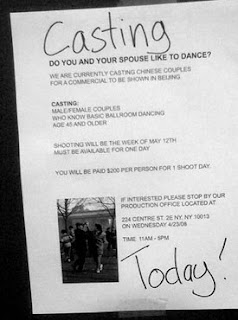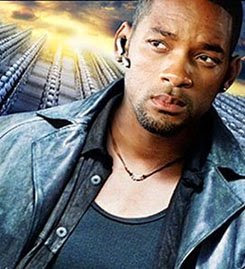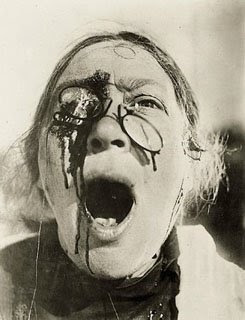
A friend in the business suggested that one of the best places to post casting call for your film might be a rehab center in L.A. or Hazelden right here in Minneapolis. Creative problem solving is the key to no budget filmmaking but let's get serious...
Today more and more indie films are using the internet to cast characters and extras. A few of those services are Now Casting and Craiglist. What can't you get on Craiglist?
You will also find organizations in the Twin Cities such as IFP Minnesota and the Minnesota Film and TV Board useful in helping you find talent and crew for your ScreenLabs Challenge production. If you contact Chris Grap at the Minnesota Film and TV Board (651) 645-3600 and ask to post a ScreenLabs call for cast and crew on their hotline, they will be happy to assist. IFP has a weekly email news called eFlash and if you call Paul Clark at (651) 644-1912 and explain you want to put out a call for crew or cast, they too will help. (Please support your local media arts organizations!)
When posting a casting call, it is very important how you explain your ScreenLabs production. First rule: Do not lie. Tell your talent exactly what the terms of your production are and what will be expected. Certainly you may pay your actors if you wish. If you explain upfront that it is an all-volunteer no budget project, make it clear how many hours, what day, morning and night call times, and transportation requirements cast members will need to follow. Tell them there will be no pay but they will get a copy of the finished short for their demo or audition reel.
Second, the more specifics you can provide will help you yield better results. If your film has a scene with a dance hall, you might do a specific call for men and women who know how to dance Flamingo. Without having to search for professional dancers, you might find really excellent extra's and have to opportunity to shoot dance scenes to weave into the texture of the passionate tangled love story you are telling.
Also, it is important to keep the number of shoot days to a minimum. You should be able to shoot a ScreenLabs project in one or two days. Longer shoots will tax the goodwill of your cast and crew and you will quickly find your production falling apart. when you post your casting call either online or on the bulletin board, provide days the cast will be needed and locations if you can.
Another local posting service you might consider is MN Talent for cast and crew. We haven't used this online service but check it out and feel free to post a comment on ScreenLabs Challenge about your experience using these services.
You might also want to check out Breakdown Services, a national casting service Breakdown Express that provides casting services but also screenplays. As these networks grow they no doubt will become more useful for those of us outside the major talent centers of New York, L.A. and Chicago but right now they don't have a breakdown for Minneapolis.





